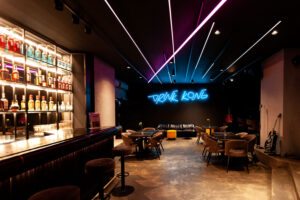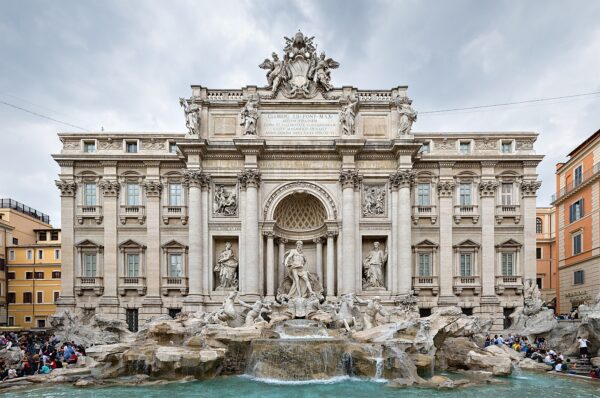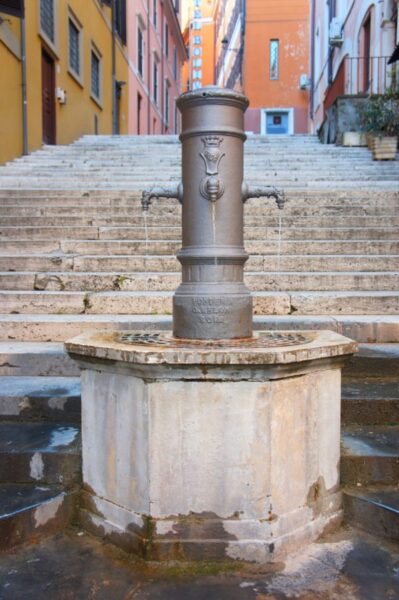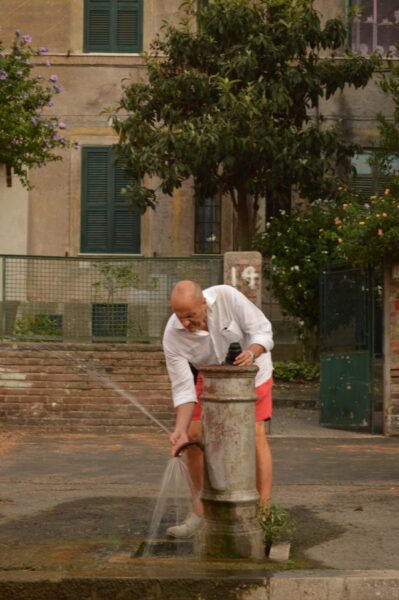Rome is nicknamed “The Eternal City” thanks to her monuments from all periods of her history from the legendary kings to the present. They begin with the 7th century BC Temple of Vesta in the Forum and end with MAXXI, her Museum of Contemporary Art, designed by the Iranian-born naturalized British architect Zaha Hadid (1950-2016) and opened in 2010. Rome is also appropriately known as “Queen of the Waters” thanks to her over 2,000 fountains, more than any other city in the world. Commissioned by several popes from Gregory XIII (r.1572-85) to Clement XIII (r.1758-74), some 50 of these fountains are “monuments” in themselves. The ones not to miss are architect-engineer Domenico Fontana’s “Fontana dell’Acqua Felice” (1585) with his large statue of Moses in its central arch, commissioned By Pope Sixtus V (r.1585-1590)and near The Baths of Diocletian; Maderno’s (1614) and Bernini’s (1677) twins in St. Peter’s Square; the three fountains in Piazza Navona especially Bernini’s “Fountain of the Four Rivers” (1648-51) commissioned by Pope Innocent X (r.1644-55) with its statues representing the rivers in the four continents known at the time (Africa, Europe, the Americas, and Asia): the Nile, the Danube, the Plate, and the Ganges, and topped with an ancient Egyptian obelisk; Bernini’s father’s boat-shaped Barcaccia (1627) in Piazza di Spagna, sadly often a victim of out-of-town hooligan soccer fans; Bernini’s “Triton” (1642) and his “Fountain of the Bees” (1644), both commissioned by Pope Urban VIII Barberini and located in Piazza Barberini near the Pope’s home; and the “Trevi Fountain”, the largest and most spectacular of Rome’s fountains, designed by Nicola Salvi to glorify the three popes who commissioned it: Clement XII (r. 1730-40), Benedict XIV (r. 1740-58), and Clement XIII (r. 1758-74). It’s the location of the famous seductive scene with Marcello Mastroianni and Anita Ekberg in Fellini’s legendary movie, La Dolce Vita (1960).
The water in these “monumental” fountains is often non potabile (undrinkable), so 2025’s tourists and Jubilee pilgrims will be thankful to the some 200 brass “nasoni” or drinking fountains in the city center for quenching their thirst. Another some 2500 “nasoni” are located in parks, EUR, and outlying residential neighborhoods. Over time they have become a beloved symbol of Rome, although they are now found in other Italian cities and towns for a national total of 5,333. In fact, when Virginia Raggi, the first female mayor of Rome from 2016-2021, tried to close down nearly all the “nasoni” leaving only 85 functional, the Romans rebelled and she had to abandon her plan.
“Nasoni” were the idea of Freemason and anticlerical Luigi Pianciani, the first mayor of Rome after the Unification of Italy, and his alderman Rinazzi (first name unknown), to provide free continuously flowing water to their fellow citizens, since running water was not yet available in most Roman homes. It was also a time when the city government was trying to control the multiple cholera and typhoid epidemics caused by the poor quality of its drinkable water. The first twenty were installed between 1872 and 1874, the last three near the Colosseum in 2024, to commemorate their 150th birthday.
Originally these drinking fountains were made of cast iron, weighed around 200 pounds, and were just over a meter tall. Three of these still exist today, in Piazza della Rotonda outside the Pantheon, in Via San Teodoro between the Forum and Circus Maximus, and in Via delle Tre Cannelli in the neighborhood called Monti. They were called “dragoni” not “nasoni” because they had three lion-headed spouts at their top.
Before long brass and more recently stainless steel replaced cast iron and the three spouts became only one, long, curved, nose-shaped, hence the name “nasoni” from naso in Italian. Each spout has a small hole. If you cover the mouth of the spout with your hand, water will flow upwards through the hole and reach your thirsty mouth. Otherwise, you can fill your personal water bottle at the spout’s mouth and thereby avoid the food trucks and mini-markets selling water at exorbitant prices.
If, after a long day of sightseeing, you are looking for a drink stronger than water, especially for their sweeping views but also for their commendable cocktails I recommend the romantic rooftop bars at “The Court” overlooking the Colosseum, “Terrazza Les Étoiles” overlooking St. Peter’s, “Roof Garden at Hotel Relais Fontana di Trevi”, and the American Bar at the Hotel Forum.
In case of rain or cold weather, a definite must is trendy “Drink Kong”, dark, but with a vibrant atmosphere accentuated by neon lights, near Rome’s main railroad station at Piazza di San Martino ai Monti 8, tel. 0623488666, reservations recommended, open every day from 18:30 to 2 AM. Founded in 2018 by the half-Roman, half-Irish mixologist Patrick Pistolesi, “Drink Kong” is no. 33 of The World’s 50 Best Bars 2024, but the list’s no. 1 choice in Italy. A hub for cocktail cognoscenti, it’s not just a place to drink, it’s an experience. Each listing on its cocktail menu includes its base spirit, a flavor map, and the type of serving glass. My favorites are Equinox made with Nordés gin, Ishtar made with Chinggis Khan Vodka, and Quetzal made with Herradura Plata Tequila. Its snack menu proposes a wide range of specialties from Japan, China, Mexico and New York Kosher.
Another special venue is the “Speakeasy Argot” at Via Cappellari 93 near Piazza Navona and Campo de’ Fiori, tel. 393-6291320, open every day from 10 PM-4 AM. It’s a club, so when you book, you have to download the membership card. In addition to excellent cocktails served on imaginatively decorated black slate plates, there’s live music.Nearby is “James Thomas Speakeasy” at Vicolo Cellini 30, tel. 370-1146287, open every day from 9 PM to 3:30 AM, with live jazz or dance music, a dancefloor and authentic 1920’s Prohibition-era décor, mixology lessons and an on-line store. Be sure to try the “house” cocktail: the “Cherry Bomb”.
Instead, if its peace and quiet in a homey, refined atmosphere you’re looking for, head to the old-fashioned Liberty-style “Hotel Locarno” near Piazza del Popolo, at Via della Penna 22, tel. 06 361-0841, reservations obligatory. It’s a special place too for a Sunday brunch.




